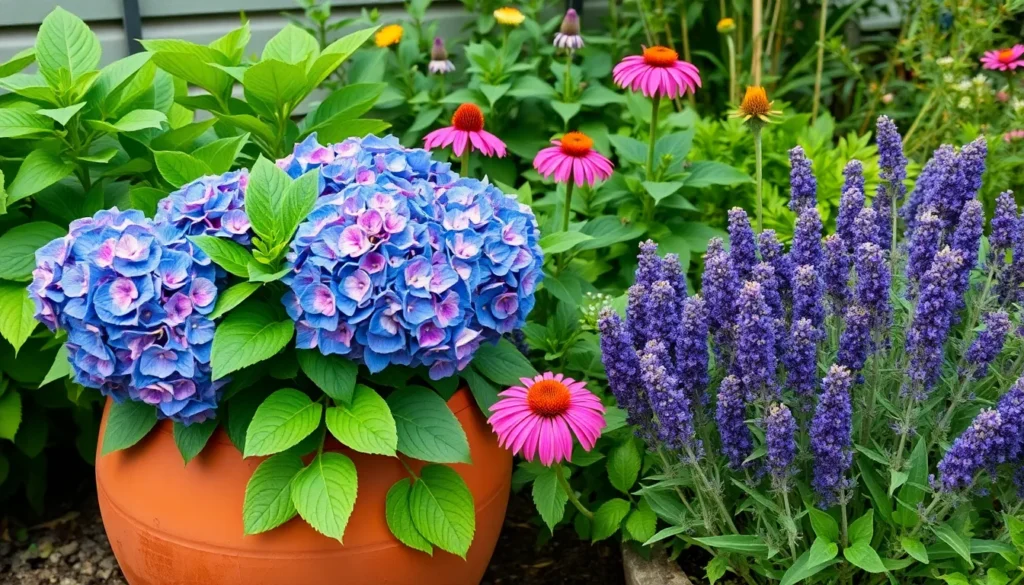Transforming your garden into a vibrant tableau of color is a delightful journey that both novice and seasoned gardeners can embark upon with enthusiasm. A garden rich with hues not only pleases the eyes but also fosters an inviting atmosphere for you, your family, and nature’s visitors.
Whether you’re just starting to dig your first bed or have years of experience coaxing blooms from soil, the choice of plants makes all the difference. This article will guide you through ten stunning outdoor plants that promise to bring a splash of color to any garden, regardless of your expertise level.
You’ll discover a diverse array of plants that thrive in various climates and conditions, ensuring that there’s something for every gardener’s unique environment. From bold, sun-loving perennials to shade-tolerant beauties, these selections will help you cultivate a garden that reflects your personal style and the natural splendor of the changing seasons.
Choosing Vibrant Flower Varieties
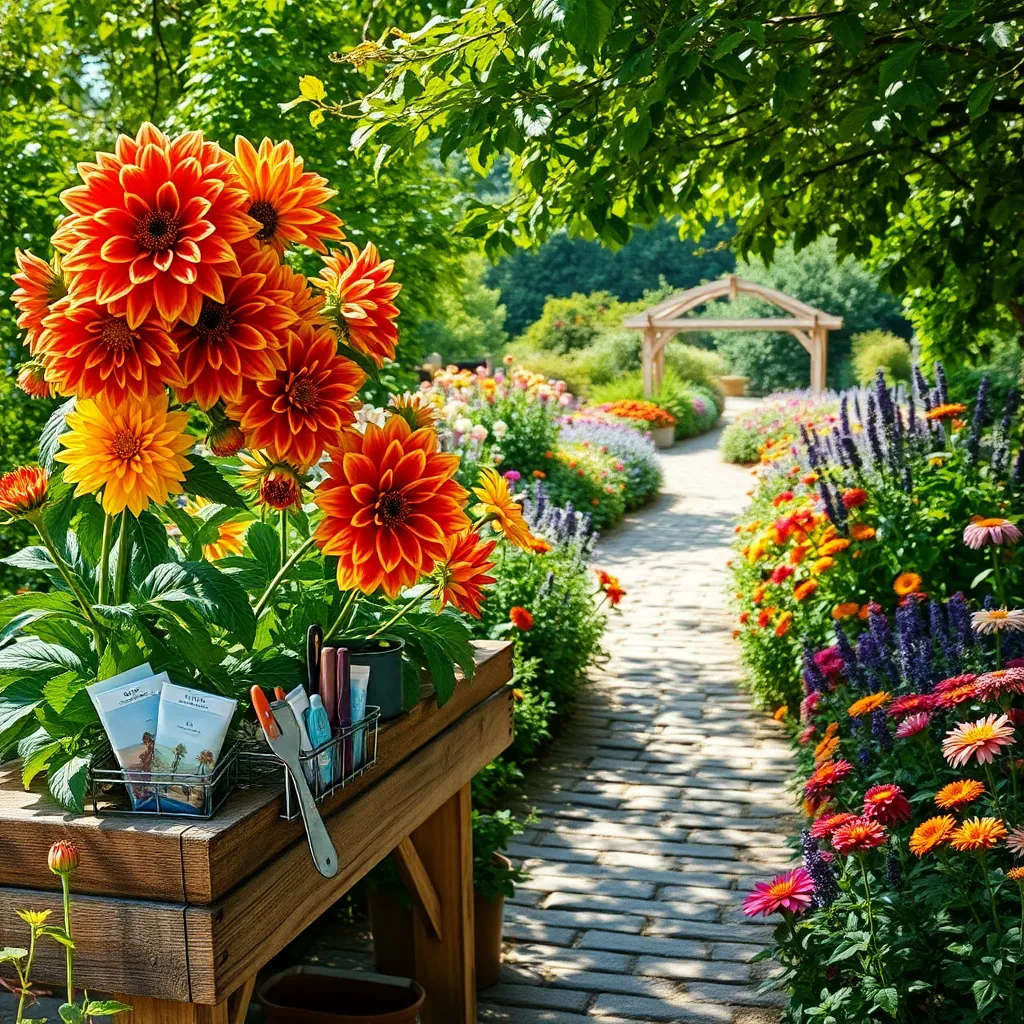
Choosing vibrant flower varieties can significantly enhance the aesthetic appeal of any garden. Begin by considering flowers with bold hues, such as zinnias and dahlias, which provide intense colors throughout the blooming season.
For a burst of color that lasts from spring to fall, include perennials like coneflowers and black-eyed Susans in your plant selection. These varieties not only offer rich colors but are also relatively low-maintenance, making them ideal for gardeners of all skill levels.
Pay attention to the growing conditions necessary for your chosen varieties to thrive. Most vibrant flowers require full sun, so ensure your garden bed receives at least six hours of direct sunlight daily.
Soil quality is another crucial factor; use a well-draining, nutrient-rich soil to support healthy growth. Adding organic matter such as compost can improve soil fertility, ensuring that your flowers bloom vibrantly throughout the season.
- Watering Tips: Aim to water deeply once a week to encourage strong root development.
- Advanced Tip: Deadhead spent blooms regularly to promote continuous flowering.
Perennials for Year-Round Color
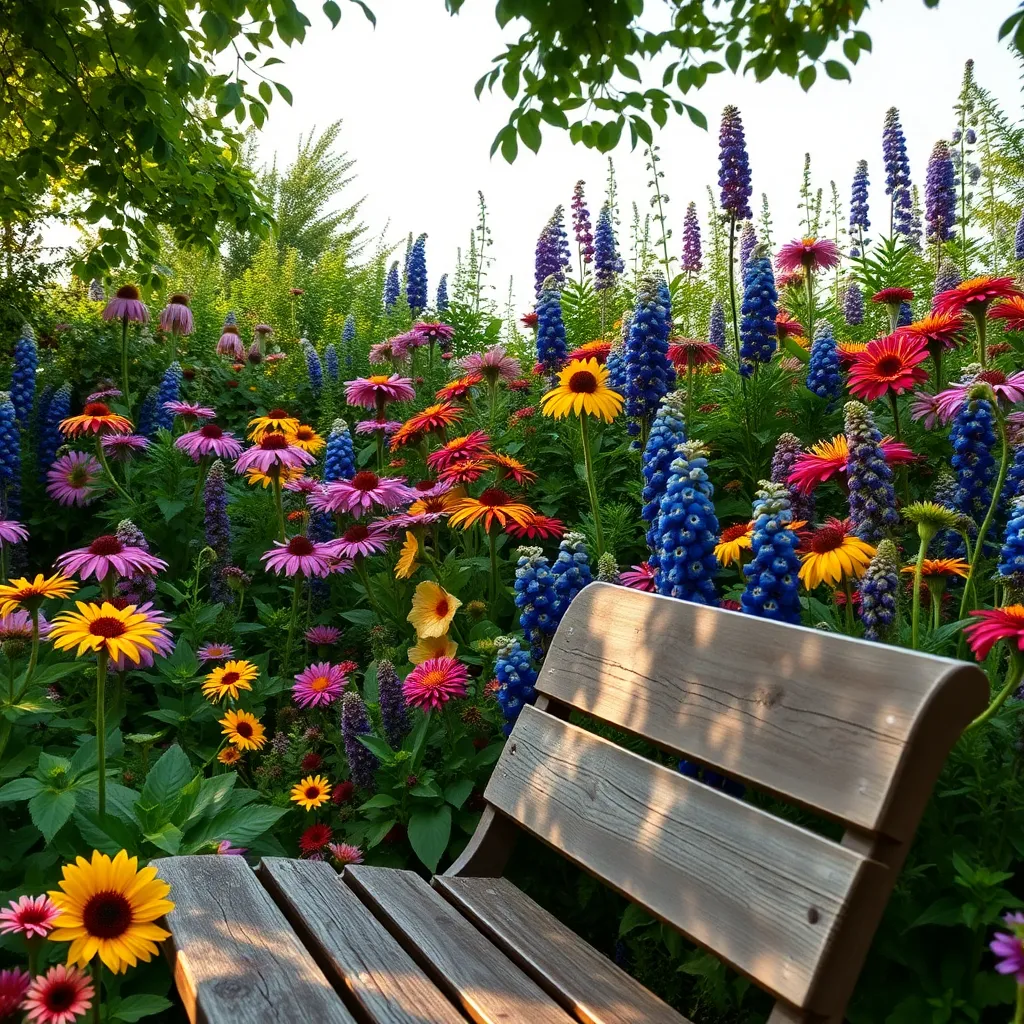
Perennials are an excellent choice for gardeners seeking year-round color in their gardens. These plants return each year, providing reliable and vibrant displays without the need for replanting.
Begin with hardy choices like daylilies and coreopsis, which thrive in a wide range of climates. Both of these perennials are known for their long blooming periods and minimal maintenance requirements.
For best results, plant your perennials in well-draining soil with plenty of organic matter. A regular mulching routine will help retain moisture and suppress weeds, enhancing plant health and flower production.
Consider adding lavender to your garden for a touch of fragrance and color. This sun-loving plant is drought tolerant once established, making it a low-maintenance choice for busy gardeners.
To ensure continuous blooms, practice deadheading by removing spent flowers. This encourages the plant to produce more blooms and extends the flowering season significantly.
Incorporate perennials with different blooming times to maintain interest throughout the year. Plant early bloomers like hellebores alongside summer staples and fall bloomers for a seamless transition of color.
Annuals that Brighten Any Space
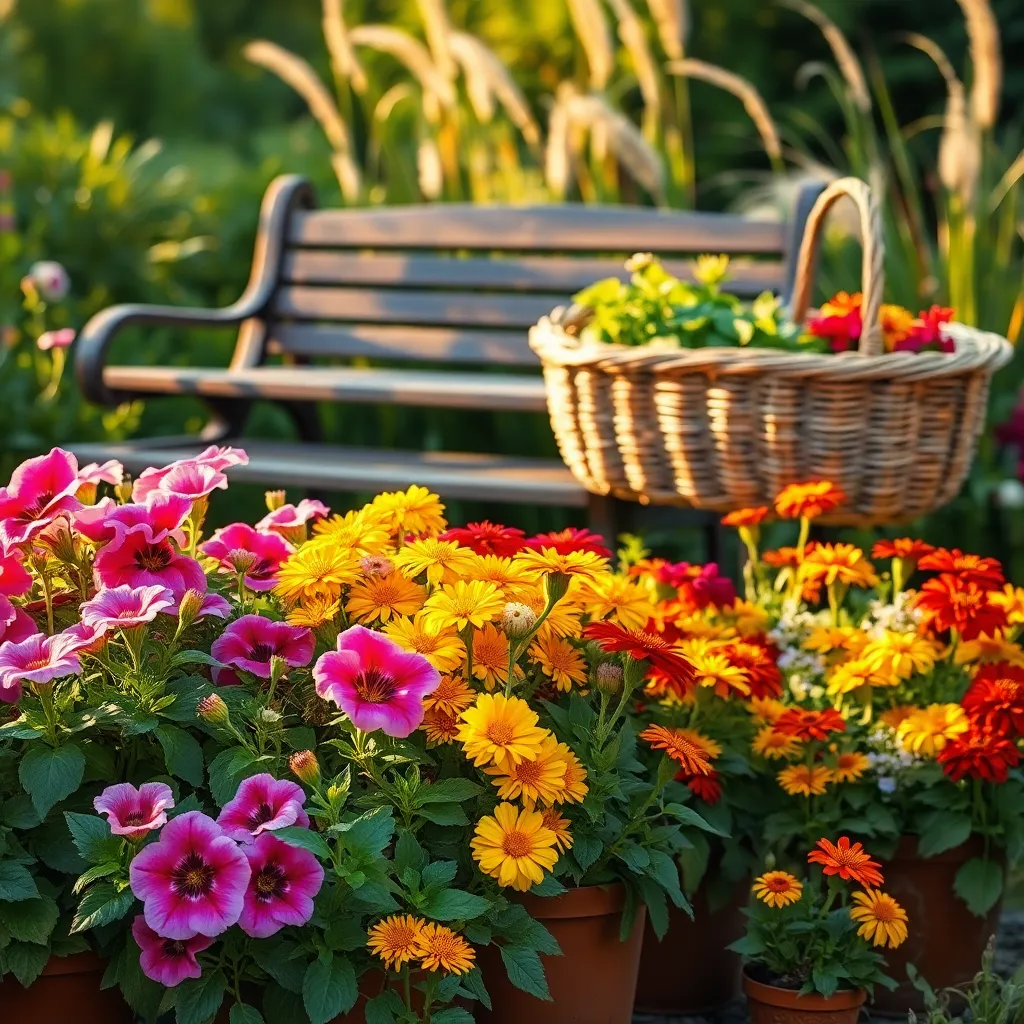
Annuals are a fantastic way to bring a burst of color to your garden, offering endless possibilities for creative combinations. They thrive in a variety of environments, making them ideal for gardeners looking to experiment and refresh their garden each year.
To ensure your annuals flourish, it’s crucial to select the right plants for your climate and soil conditions. Most annuals prefer well-draining soil and a location that receives full sun, which means at least six hours of sunlight per day.
Watering is another key consideration, as these plants often require more frequent watering than perennials. During hot, dry spells, be prepared to water daily, ensuring the soil remains consistently moist but not waterlogged.
Consider planting marigolds and zinnias if you’re looking for vibrant color and low maintenance. Both are hardy choices that can tolerate a range of conditions, making them perfect for beginners.
Striking Foliage for Visual Interest
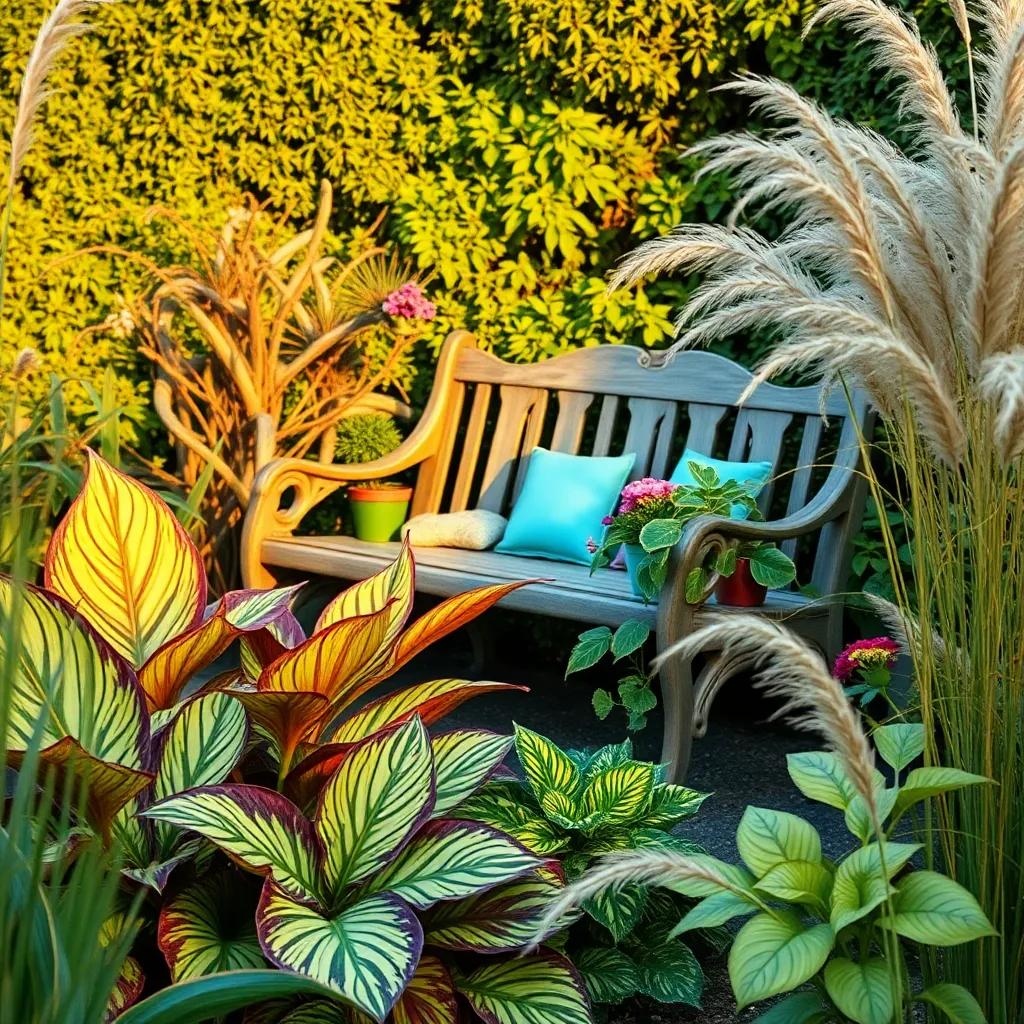
Among the many elements that can add visual interest to your garden, foliage with striking colors or textures stands out remarkably. Plants like Heuchera, with its ruffled leaves in shades of purple, lime, or bronze, can create a dynamic backdrop for other blooms.
When selecting foliage plants, consider their light and soil requirements to ensure they thrive. For instance, Heuchera prefers partial shade and well-drained soil, making it perfect for borders under trees or in mixed containers.
Another excellent choice is the Japanese Maple, known for its delicate, lacy leaves that can range from deep red to vibrant green. These trees do well in moist, slightly acidic soil and need protection from harsh afternoon sun, making them ideal for a sheltered spot in your garden.
For those looking for low-maintenance options, consider the Blue Fescue grass, with its spiky, icy-blue leaves that provide contrast and texture. It thrives in full sun and poor, well-drained soil, making it a great choice for rock gardens or contemporary garden designs.
Mixing and matching plants with distinctive foliage can be both rewarding and fun, offering year-round interest even when flowers are out of season. Experimenting with different leaf shapes and colors can create a tapestry-like effect, enriching your garden’s visual appeal and inviting admiration from visitors.
Climbing Plants for Vertical Appeal
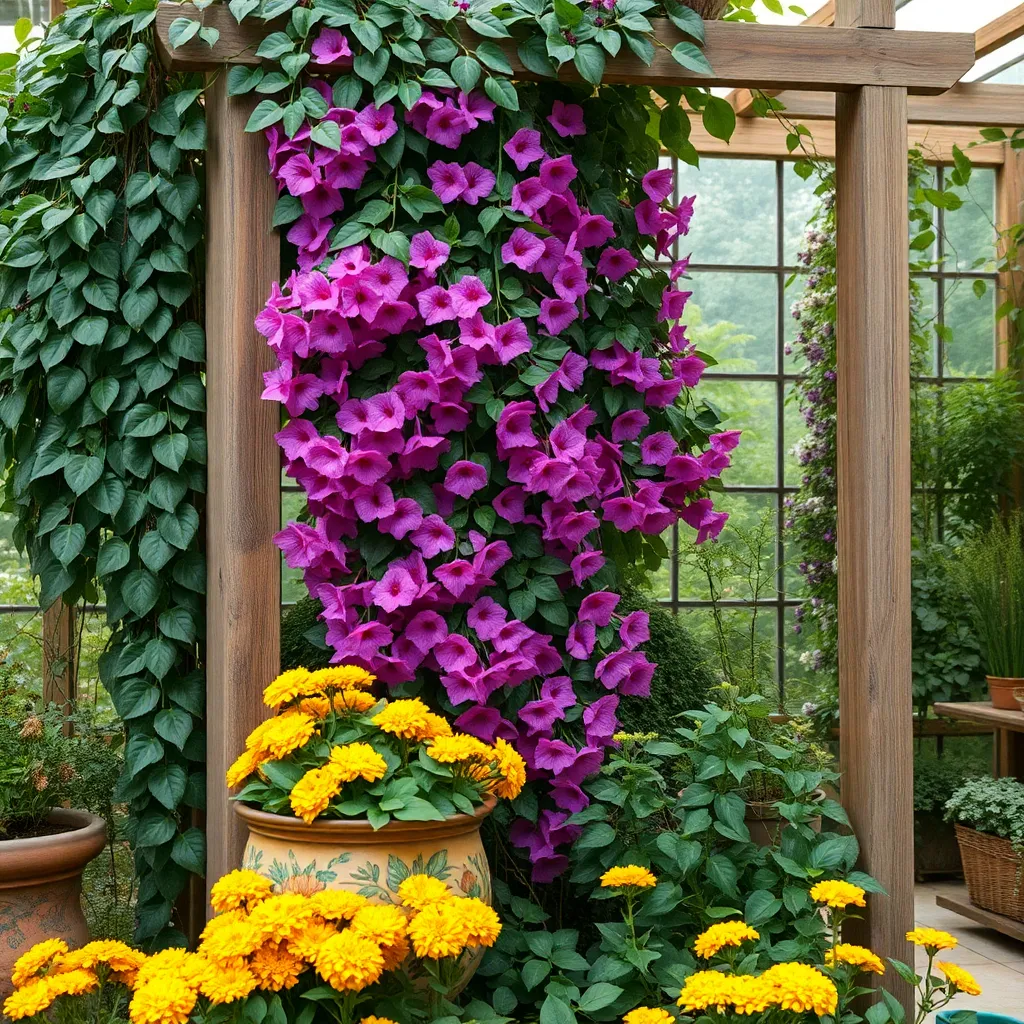
For gardeners looking to add vertical appeal to their garden, climbing plants are a fantastic choice. They not only save space but also add a lush, vibrant dimension to any outdoor area, making them ideal for both small and large gardens.
One popular option is the Clematis, known for its stunning, colorful blooms. To ensure a robust growth, plant Clematis in well-drained soil and provide a sturdy trellis or support structure for it to climb.
Beginners will find that Clematis thrives best in a spot where its roots are shaded but its vines can bask in the sun. Water regularly, ensuring the soil is moist but not waterlogged, particularly during dry periods.
Another excellent choice is the fast-growing Honeysuckle, which offers both fragrance and color. For optimal growth, plant Honeysuckle in a location that receives full sun to partial shade, and use a rich, organic mulch to retain soil moisture.
To prevent legginess in Honeysuckle, prune annually after flowering to maintain a compact shape and encourage new blooms. Advanced gardeners can experiment with different cultivars to extend the flowering season and enhance the garden’s vertical appeal.
Fragrant Blooms to Soothe Senses
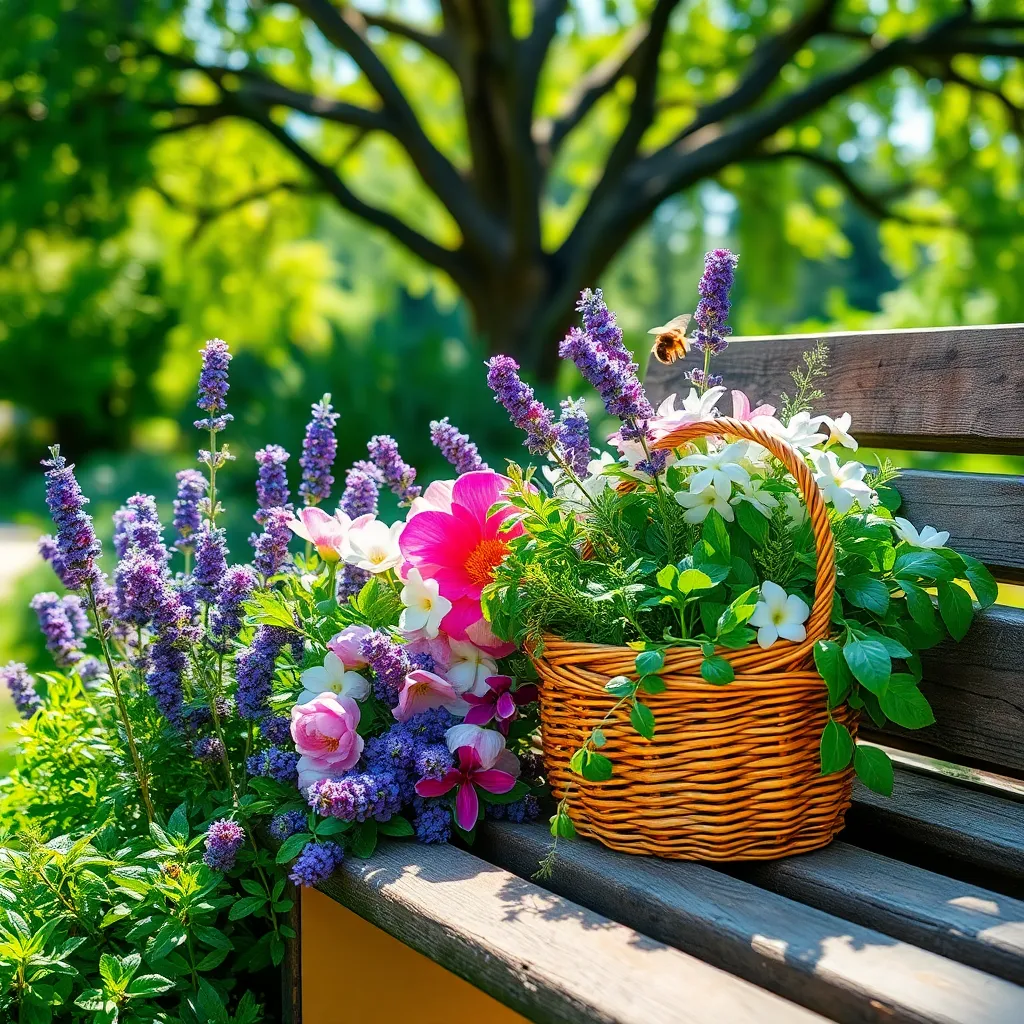
Transform your garden into a sensory haven with fragrant blooms that delight the senses. Lavender is a popular choice, thriving in well-drained, sandy soil and full sun. For gardeners in cooler climates, mulching around the base can protect the roots during winter. Regular pruning encourages bushier growth and a more abundant fragrance, perfect for attracting pollinators.
Another excellent option for aromatic gardens is the jasmine plant. This climber loves a sunny spot and requires a trellis or fence to support its growth. Water jasmine regularly, allowing the top inch of soil to dry out between waterings. Fertilize monthly with a balanced, water-soluble fertilizer during the growing season to enhance its sweet, exotic scent.
Roses are timeless for their beauty and fragrance, offering a wide variety of scents from spicy to sweet. They prefer a location with at least six hours of sunlight and rich, loamy soil. To maintain healthy roses, deadhead spent blooms and remove any diseased foliage promptly. For an advanced touch, experiment with companion planting to deter pests and boost rose vigor.
For a tropical touch, consider planting gardenias, which are known for their creamy white flowers and intoxicating fragrance. These plants thrive in acidic, well-drained soil and partial shade. Ensure consistent moisture levels, particularly during blooming, to prevent bud drop. Adding organic matter like peat moss can improve soil acidity and drainage, creating optimal conditions for gardenias to flourish.
Low-Maintenance Colorful Options
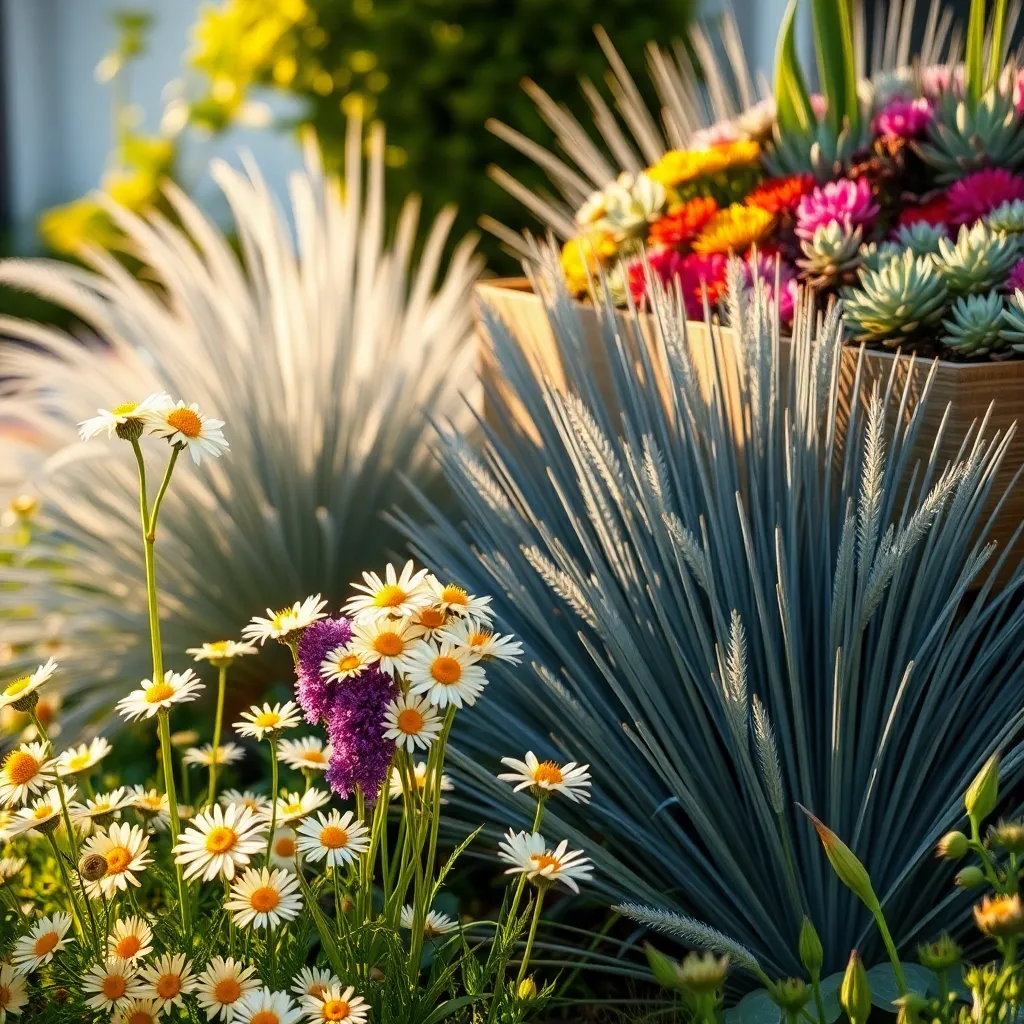
For gardeners seeking vibrant colors without the hassle, consider planting calibrachoas, often referred to as “Million Bells.” These charming plants thrive in full sun and require well-drained soil, making them ideal for containers or hanging baskets where excess water won’t pool.
Another excellent choice is sedum, which offers a range of colors from green to deep red. Sedums are succulents, meaning they are drought-tolerant and prefer sandy, well-drained soil, making them perfect for rock gardens or areas with minimal rainfall.
Consider the daylily for a burst of color and ease of care. These perennials are incredibly resilient, thriving in various soil types and tolerating both full sun and partial shade, which means they adapt well to different garden conditions.
For a touch of blue, add perennial salvia to your garden, which attracts pollinators while requiring minimal maintenance. Salvia prefers a sunny location and benefits from deadheading to encourage continuous blooming, ensuring your garden remains a vibrant focal point throughout the season.
Edible Plants with Vibrant Hues
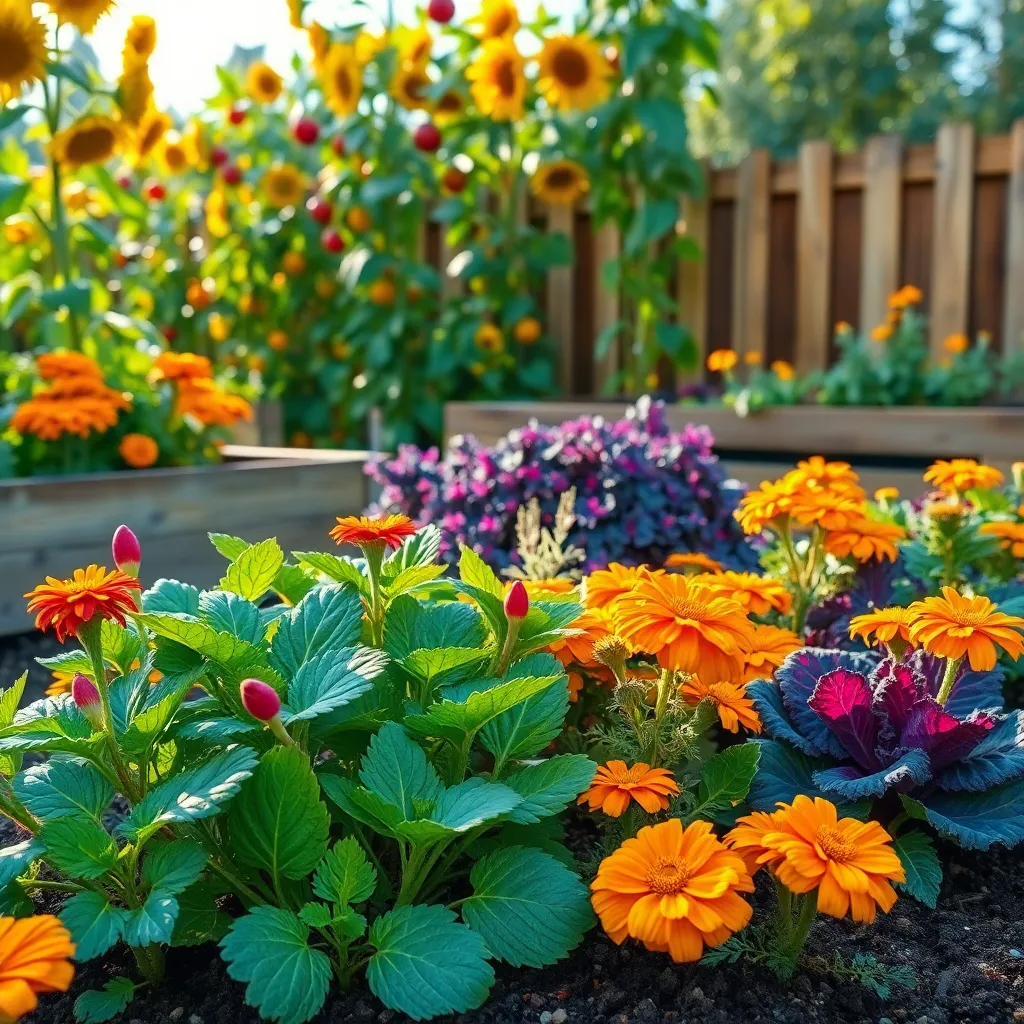
Adding edible plants with vibrant hues to your garden not only enhances its beauty but also offers a delicious harvest. Swiss chard is an excellent choice, with its striking rainbow-colored stems that add visual appeal. It thrives in well-drained soil and requires full sun to partial shade, making it versatile for various garden settings. Water it regularly, especially during dry spells, to keep the leaves tender and flavorful.
Red Russian kale is another fantastic option that combines stunning color with nutritional value. Its purplish-red veins and frilly leaves stand out in any garden. Plant it in rich, fertile soil with good drainage to ensure its robust growth. For the best yield, provide consistent moisture and consider using a balanced fertilizer every few weeks.
Consider growing purple basil for a splash of color and aromatic delight. This variety of basil adds a unique touch with its deep purple leaves, perfect for culinary use. It prefers a sunny spot in your garden and needs soil that is both fertile and well-draining. Regular pinching of the leaves encourages bushy growth and prevents flowering, which can alter the flavor.
For an advanced gardening challenge, try cultivating rainbow carrots, which offer a spectrum of colors from purple to yellow. These carrots need loose, sandy soil to develop their long roots without obstruction. Maintain consistent moisture levels and thin seedlings early to allow proper spacing for root development. With patience and care, you’ll be rewarded with a colorful harvest that’s as delightful to eat as it is to see.
Shade-Loving Colorful Selections
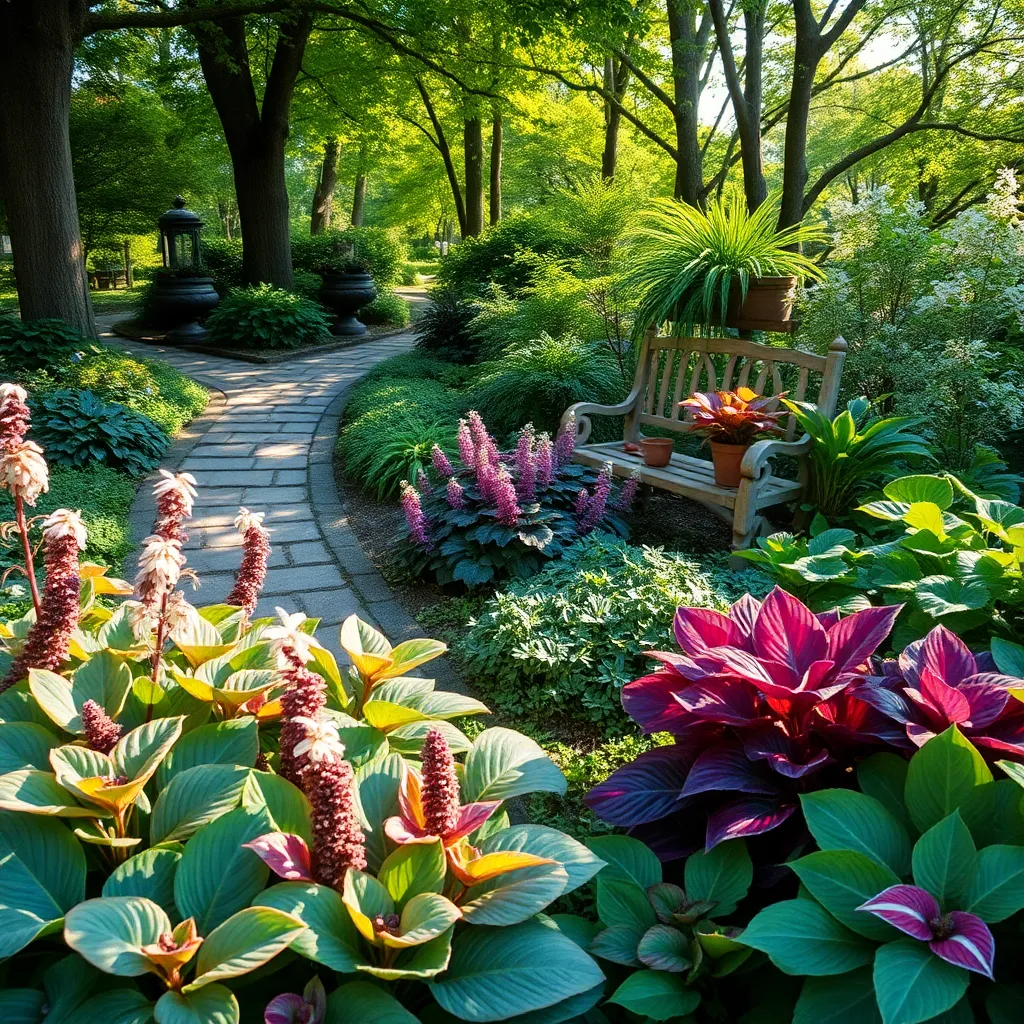
For gardeners seeking to add color to shaded areas, certain plants can thrive and brighten up these spaces. Astilbe is a fantastic choice that offers feathery plumes in shades of pink, red, and white, thriving in moist, well-drained soil.
Another excellent option is the Bleeding Heart, known for its heart-shaped flowers that add a whimsical touch to any garden. This plant prefers rich, humus-heavy soil and requires regular watering to keep its roots consistently moist.
Consider planting Heuchera, or coral bells, which is celebrated for its vibrant foliage colors ranging from deep purples to bright lime greens. These perennials are low-maintenance, requiring partial shade and well-draining soil to flourish.
For a pop of blue in shaded areas, Brunnera, also known as Siberian bugloss, is a wonderful choice with its delicate, forget-me-not-like flowers. It thrives in consistently moist soil and benefits from a layer of mulch to retain moisture and suppress weeds.
Sun-Loving Plants for Bold Displays
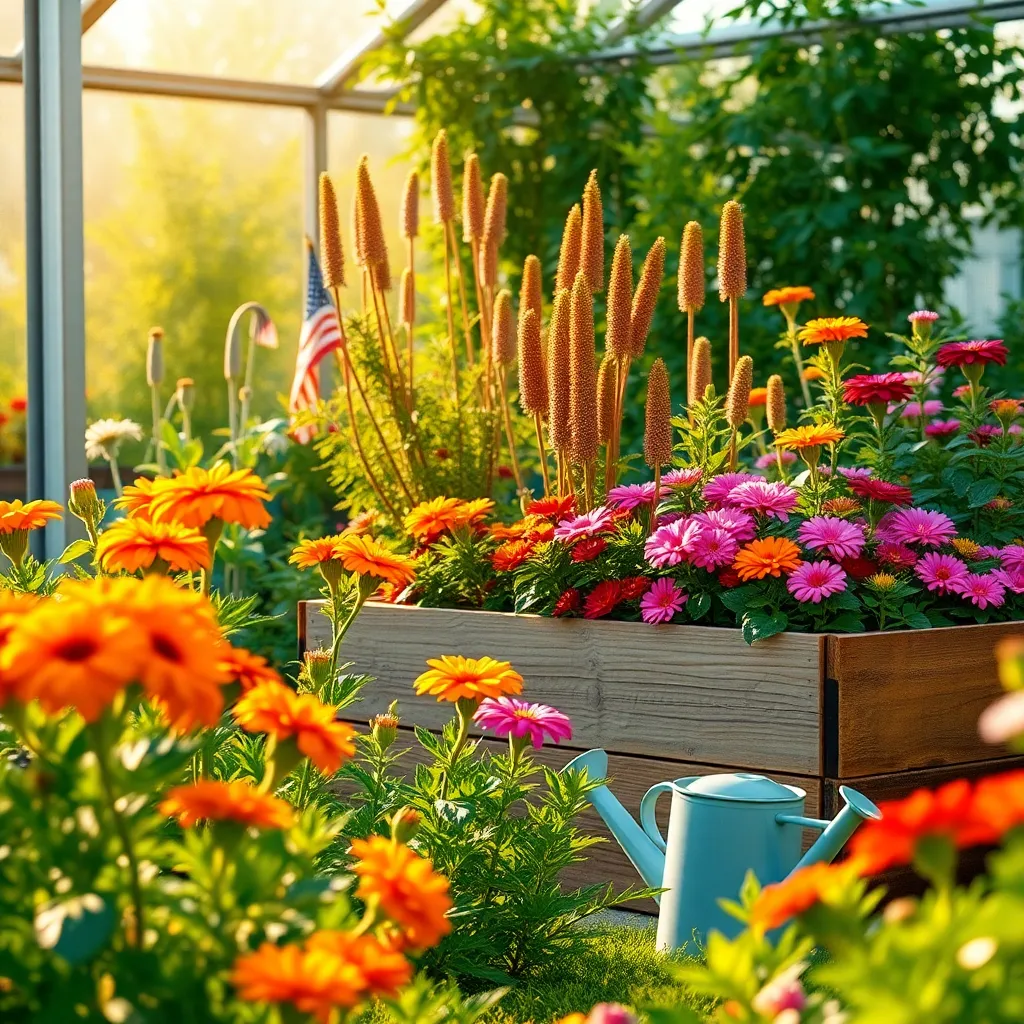
To create bold displays in your garden, consider incorporating sun-loving plants that thrive in bright, direct light. These plants often boast vibrant colors and striking forms, making them ideal choices for gardeners seeking dramatic visual impact.
If you’re new to gardening, start with easy-to-grow options like marigolds and zinnias. These annuals perform beautifully in well-drained soil and require consistent watering, especially during dry spells, to maintain their lush blooms.
For a more advanced challenge, try planting dahlias, which offer a dazzling array of colors and sizes. They need rich, fertile soil and benefit from regular feeding with a balanced fertilizer, promoting strong growth and abundant flowering.
Ensure your sun-loving plants have adequate spacing to allow for air circulation, preventing potential fungal problems. Mulching around the base of plants can help retain moisture and keep roots cool during hot summer months.
Conclusion: Growing Success with These Plants
In “10 Stunning Outdoor Plants for a Colorful Garden,” we’ve explored how different plants can symbolize and nurture the key elements of healthy relationships: trust, communication, patience, support, growth, resilience, balance, appreciation, flexibility, and love. Just as a garden thrives with the right combination of plants, your relationships flourish when these elements are nurtured.
To take immediate action, consider planting a new “relationship garden” with your partner or loved one. Choose a plant that represents an aspect you’d like to cultivate together. This simple, yet meaningful, activity can serve as a living reminder of your commitment to growth and connection.
Be sure to bookmark this article as a handy reference to revisit when seeking inspiration or guidance on maintaining a vibrant relational landscape. As you cultivate your personal garden of relationships, remember that success is an ongoing journey, not a destination. With dedication and mindfulness, your relationships can bloom beautifully, reflecting the care and attention you invest in them. Embrace this opportunity to transform both your garden and your connections, and watch them flourish in harmony.

